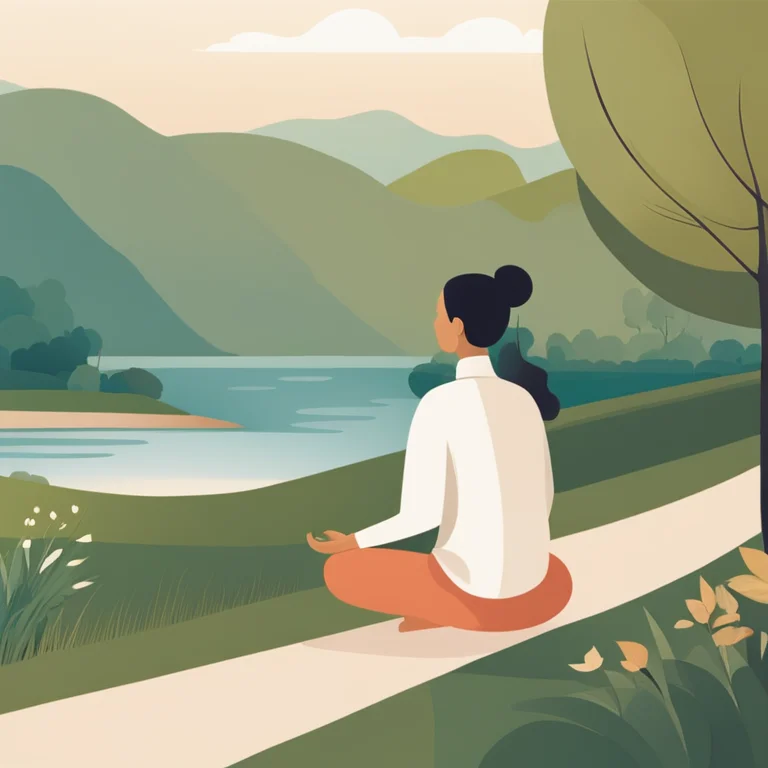
The Serene Steps of Meditation Walking
Discover the tranquility of combining meditation with movement in our comprehensive guide on Meditation Walking, a practice that enhances mindfulness and spiritual harmony.
article by Hina Kurosawa
Meditation Walking: An Introduction
Meditation is often perceived as a static practice, typically visualized as sitting in silence and stillness. However, Meditation Walking offers an enriching alternative that unites the calming effects of meditation with the gentle rhythm of walking. This practice has been adopted by various spiritual traditions, with evidence suggesting that it enhances mental clarity, reduces stress, and improves physical well-being. As we delve into the world of Meditation Walking, we'll explore the steps to master this serene and purposeful stride, sidestepping the oftentimes static nature of conventional meditation methods.

Preparing for Your Meditation Walk
Before commencing your Meditation Walking, it's critical to select an environment conducive to tranquility. Nature paths, quiet parks, or even a serene room can serve as ideal settings. Comfortable clothing and footwear ensure your physical ease, allowing the mind to focus. As you set out, begin with a few deep breaths, grounding yourself in the present moment. Start by bringing awareness to your body, noticing the sensations of your feet touching the ground and the rhythm of your breath.

Embracing Mindfulness in Motion
The cornerstone of Meditation Walking is mindfulness. As you walk, maintain a slow, intentional pace that allows you to be fully aware of each step. Focus on the sensation of movement, the rhythm of your breath, and the delicate balance required for each step. Let any distracting thoughts drift by like clouds, gently bringing your attention back to your physical sensations. This practice helps quiet the incessant chatter of the mind, encouraging a deeper connection with your inner self.

Integrating Breathing Techniques
Breathing techniques are often integrated into Meditation Walking to deepen the meditative state. A common practice involves synchronizing your steps with your breath. For instance, you may inhale for three steps and exhale for three steps. This method not only helps regulate your walk but also promotes a focused and meditative mindset. With practice, you can experiment with different patterns and find the rhythm that best suits your pace and lung capacity.

Overcoming Challenges
Although Meditation Walking appears simple, it can pose challenges, especially for those accustomed to rapid, goal-oriented walking. The key is persistence. If your mind wanders or external distractions interfere, patiently guide your focus back to your breath and steps. The beauty of Meditation Walking lies in its repetitive nature, which, over time, fosters improved concentration and a greater sense of peace.
Cultivating Spiritual Connectivity
Beyond mental tranquility, Meditation Walking opens a pathway to spiritual connectivity. For some, the rhythmic steps become a form of moving prayer or a way to synchronize with the universe's rhythms. It aligns well with the values of palmistry, astrology, and other metaphysical practices, as it encourages a deeper attunement to the subtle energies around and within us.
Concluding Your Meditation Walk
As you conclude your Meditation Walk, gradually allow your awareness to extend beyond yourself. Take a moment to absorb your surroundings, express gratitude for the experience, and gently transition back to a regular pace, carrying the calm and clarity into the rest of your day. Regular practice will refine your ability to walk with meditative intention, and over time, you will likely notice profound changes in your mental and spiritual well-being.
Published: 1/9/2024
Modified: 1/9/2024
More predictions
Come back here soon to learn more about yourself and your future


The Serenity Sojourn: Embrace a Meditation Retreat
Delve into the tranquility of a meditation retreat and rejuvenate your mind, body, and soul with practices that transcend time.


Retreat into Serenity: A Meditation Haven
Discover the transformative power of a meditation retreat and find tranquility for mind, body, and spirit in our comprehensive guide.


The Harmony of Meditation and Sleep
Discover the synergistic benefits of meditation for enhancing sleep quality and overall well-being in this insightful article.